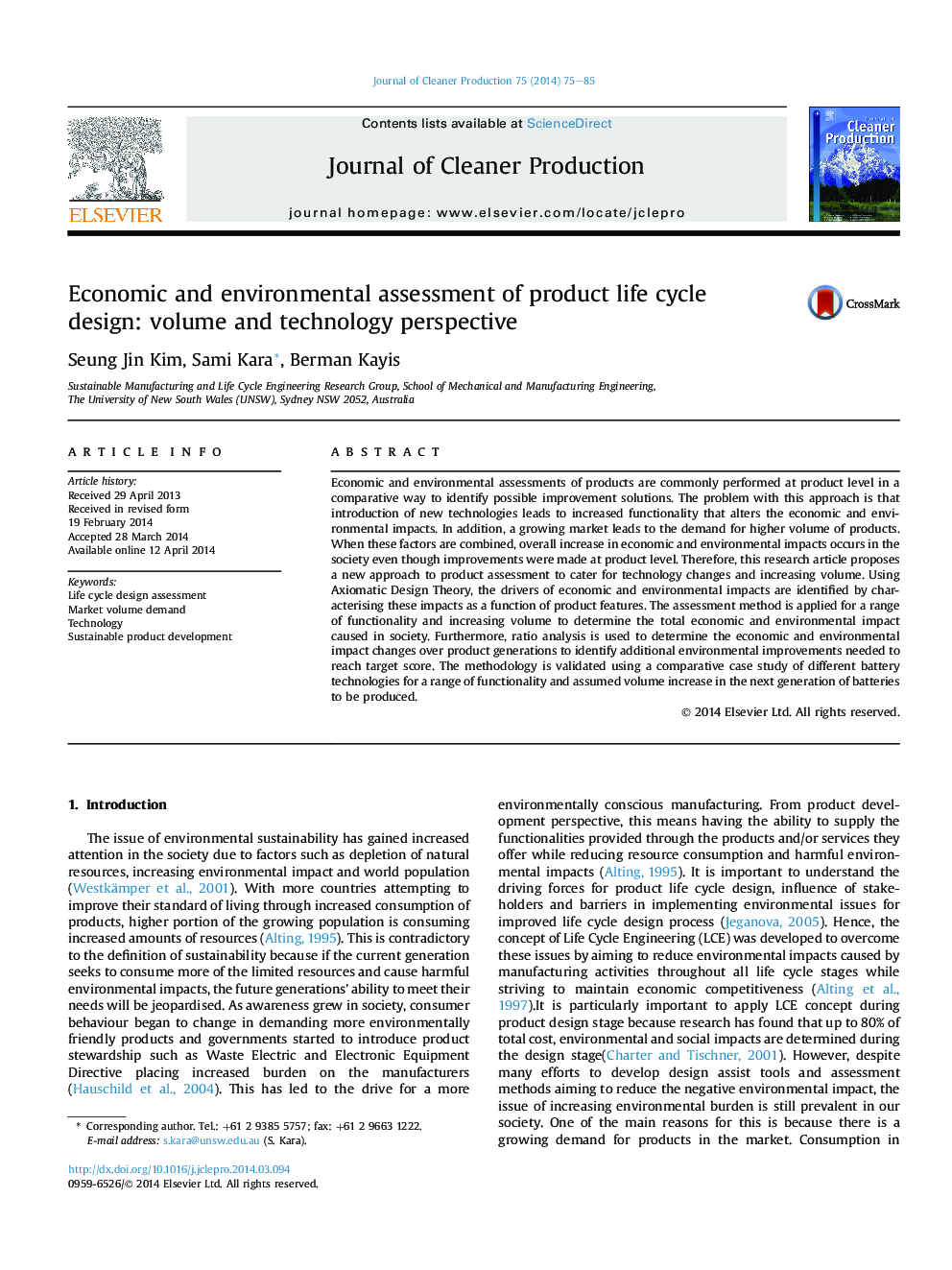| Article ID | Journal | Published Year | Pages | File Type |
|---|---|---|---|---|
| 1744853 | Journal of Cleaner Production | 2014 | 11 Pages |
•Product level economic and environmental assessments are insufficient.•Technology change causes variability in functionality and design parameters.•Economic and environmental impacts change due to new technologies.•Design improvement is considered from total volume perspective.•Necessary design improvement is quantified for targeted environmental impact.
Economic and environmental assessments of products are commonly performed at product level in a comparative way to identify possible improvement solutions. The problem with this approach is that introduction of new technologies leads to increased functionality that alters the economic and environmental impacts. In addition, a growing market leads to the demand for higher volume of products. When these factors are combined, overall increase in economic and environmental impacts occurs in the society even though improvements were made at product level. Therefore, this research article proposes a new approach to product assessment to cater for technology changes and increasing volume. Using Axiomatic Design Theory, the drivers of economic and environmental impacts are identified by characterising these impacts as a function of product features. The assessment method is applied for a range of functionality and increasing volume to determine the total economic and environmental impact caused in society. Furthermore, ratio analysis is used to determine the economic and environmental impact changes over product generations to identify additional environmental improvements needed to reach target score. The methodology is validated using a comparative case study of different battery technologies for a range of functionality and assumed volume increase in the next generation of batteries to be produced.
